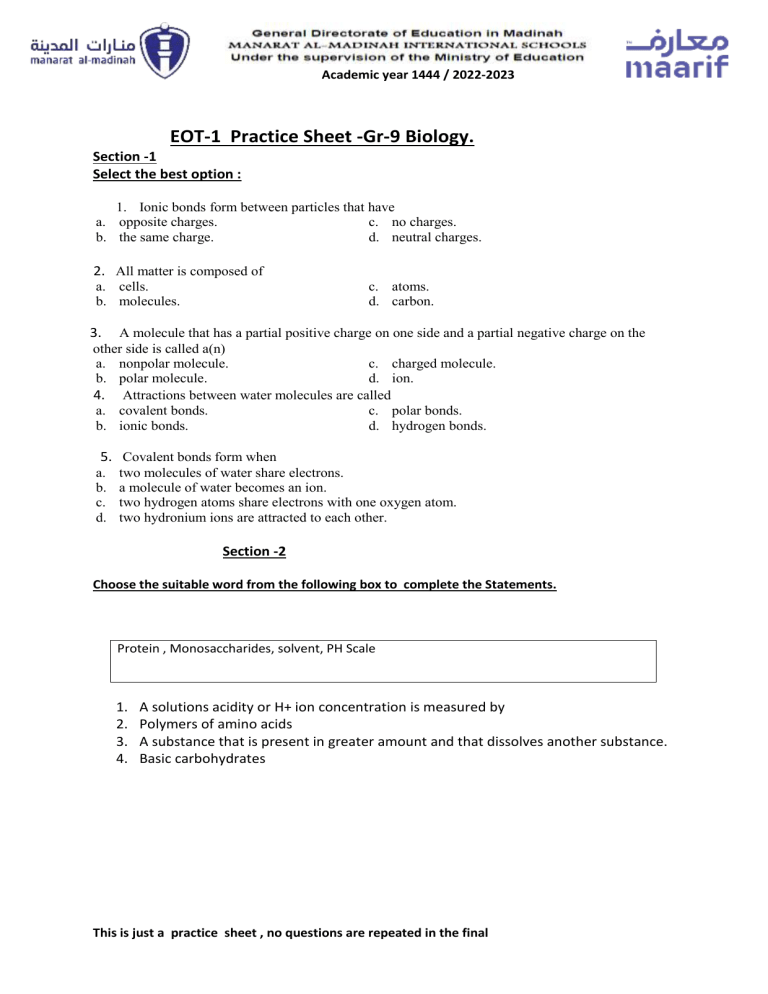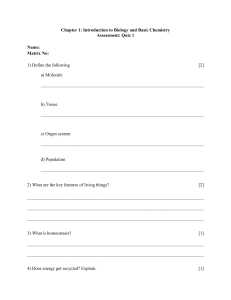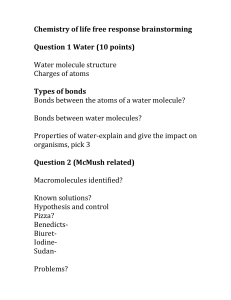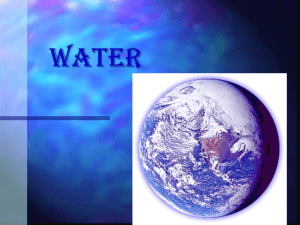
Academic year 1444 / 2022-2023 EOT-1 Practice Sheet -Gr-9 Biology. Section -1 Select the best option : 1. Ionic bonds form between particles that have a. opposite charges. c. no charges. b. the same charge. d. neutral charges. 2. All matter is composed of a. cells. b. molecules. c. atoms. d. carbon. 3. A molecule that has a partial positive charge on one side and a partial negative charge on the other side is called a(n) a. nonpolar molecule. c. charged molecule. b. polar molecule. d. ion. 4. Attractions between water molecules are called a. covalent bonds. c. polar bonds. b. ionic bonds. d. hydrogen bonds. 5. Covalent bonds form when a. b. c. d. two molecules of water share electrons. a molecule of water becomes an ion. two hydrogen atoms share electrons with one oxygen atom. two hydronium ions are attracted to each other. Section -2 Choose the suitable word from the following box to complete the Statements. Protein , Monosaccharides, solvent, PH Scale 1. 2. 3. 4. A solutions acidity or H+ ion concentration is measured by Polymers of amino acids A substance that is present in greater amount and that dissolves another substance. Basic carbohydrates This is just a practice sheet , no questions are repeated in the final Academic year 1444 / 2022-2023 Section-3 State whether the statement is true or false. 1. An ionic bond is formed between two electrically oppositely charged ions ( True/ False) 2. Adhesion is the attraction between different substances. ( True/ False) 3. A hydrogen bond is an attraction between a slightly positive hydrogen atom and slightly negative atom ,like oxygen or nitrogen. ( True/ False) 4. A gene is a segment of DNA , that stores the genetic information. ( True/ False) Section-4: Correct the underlined word: 1. Carbohydrate is a polymer of Amino acid.-protein 2. A nucleotide consists of a sugar, a phosphate group and a oxygen containing molecule called base.- Nitrogen 3. A base is a compound that releases a proton.- Acid Section -5 Answer the following: 1. What are the two most common elements found in large biomolecules? Ans: -----------------------------------------------------------------------------------------------------------------------------------------------------------------------2. What makes a water molecule polar? Ans-------------------------------------------------------------------------------------------- ---------------------------------------------------------------------------------------------------------- This is just a practice sheet , no questions are repeated in the final 2



